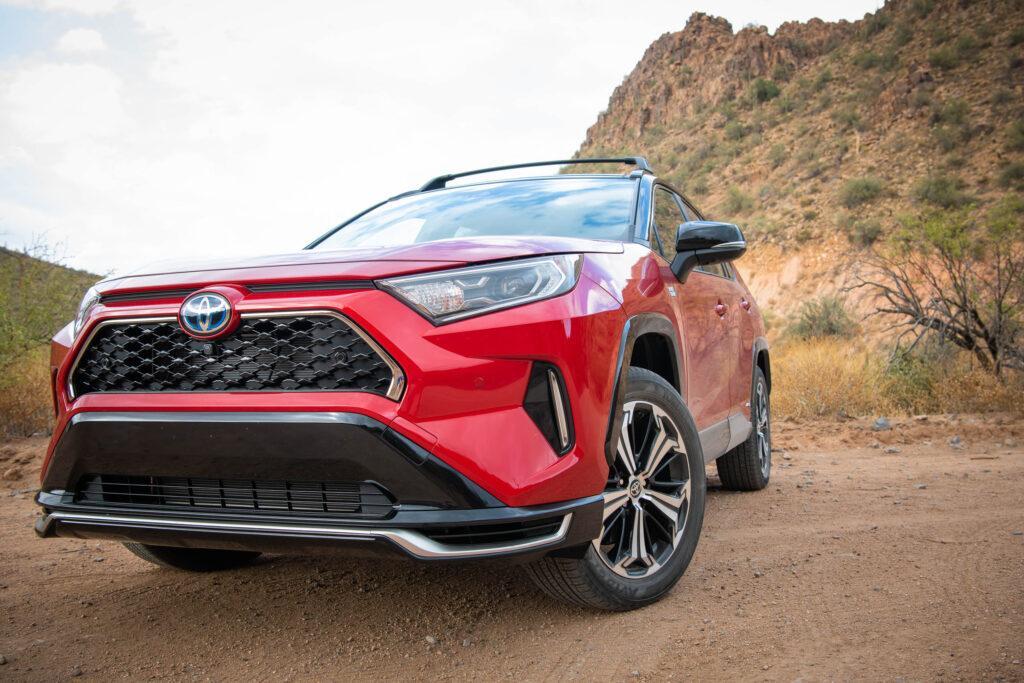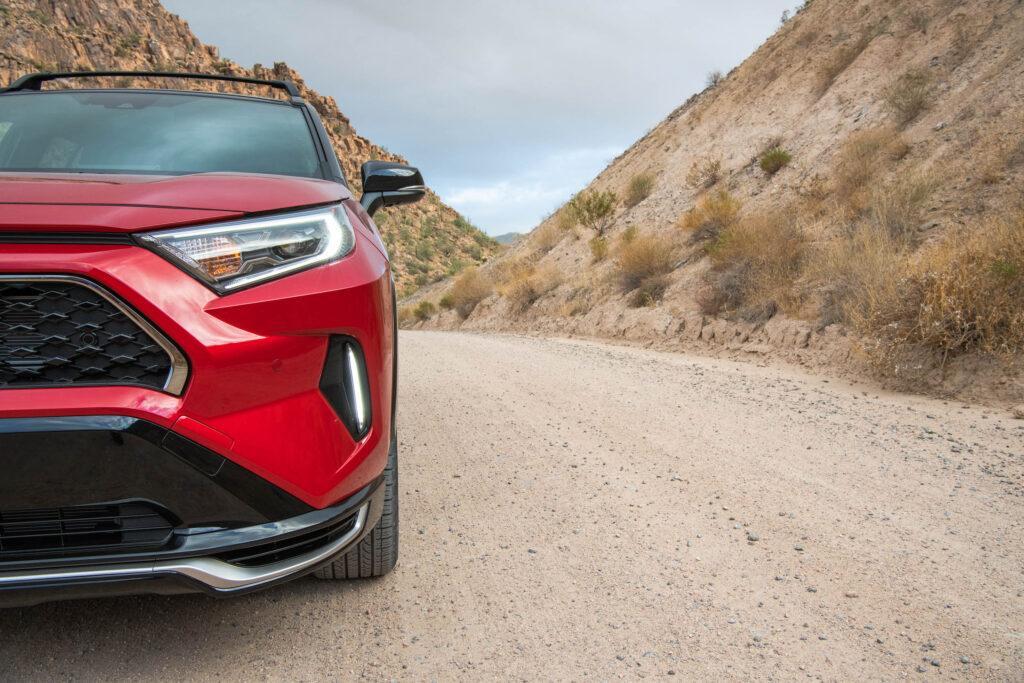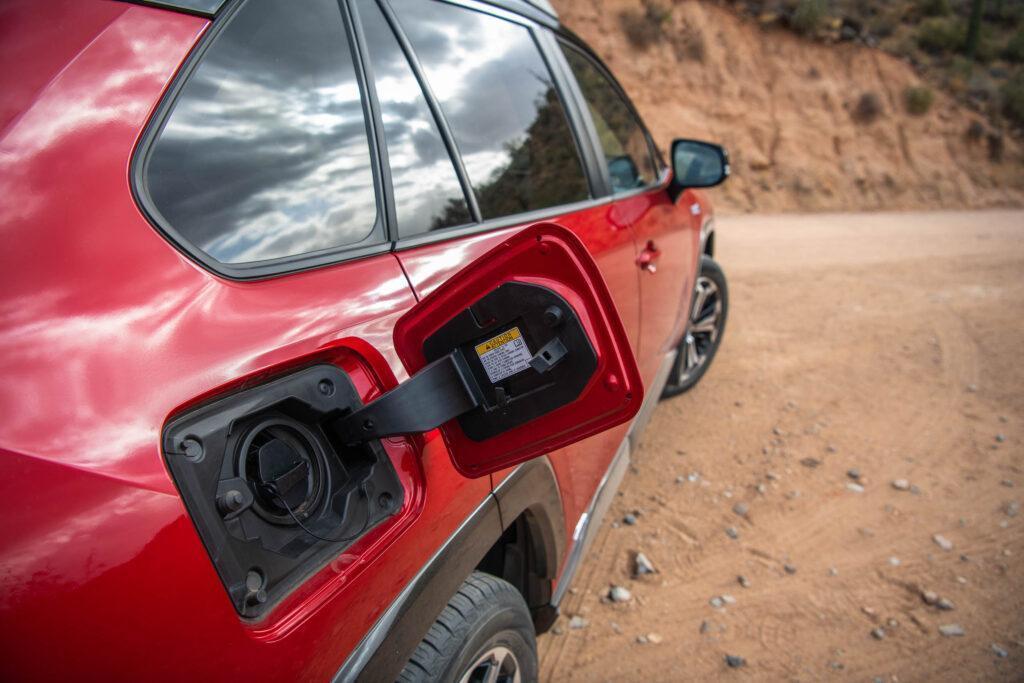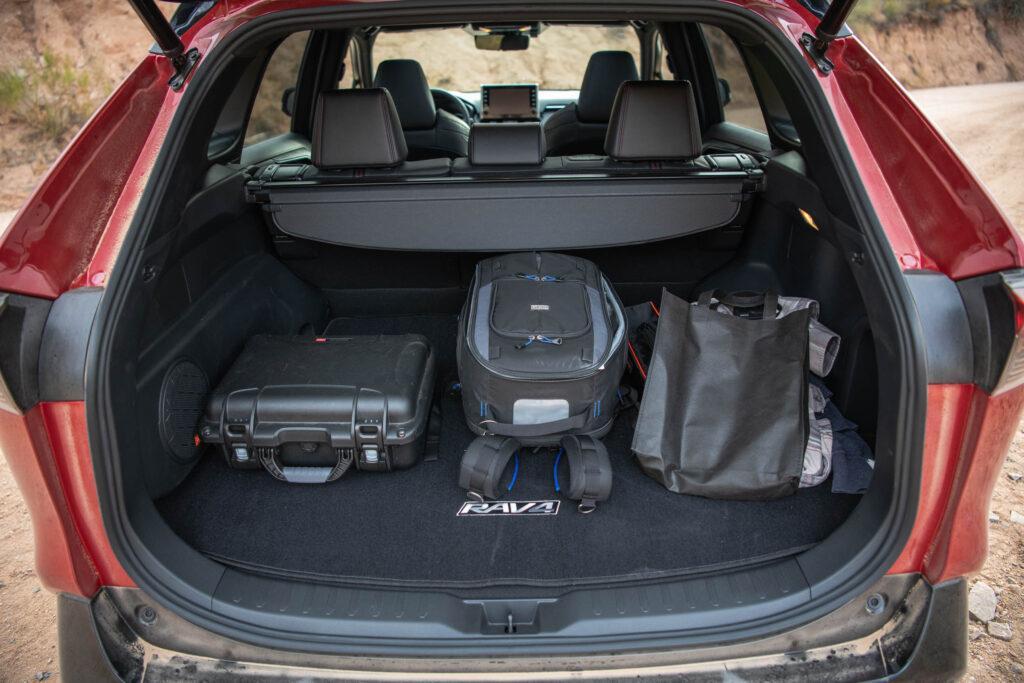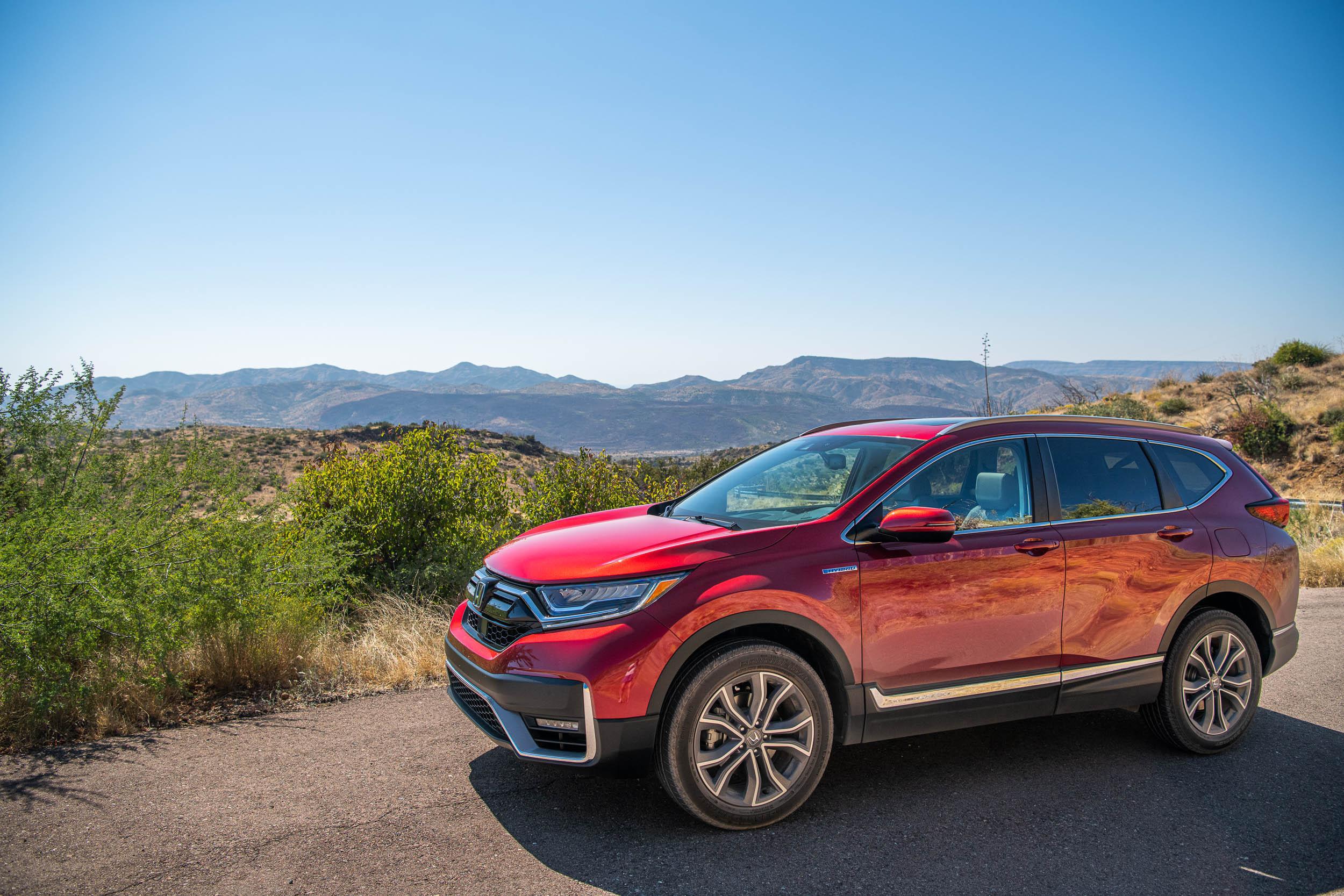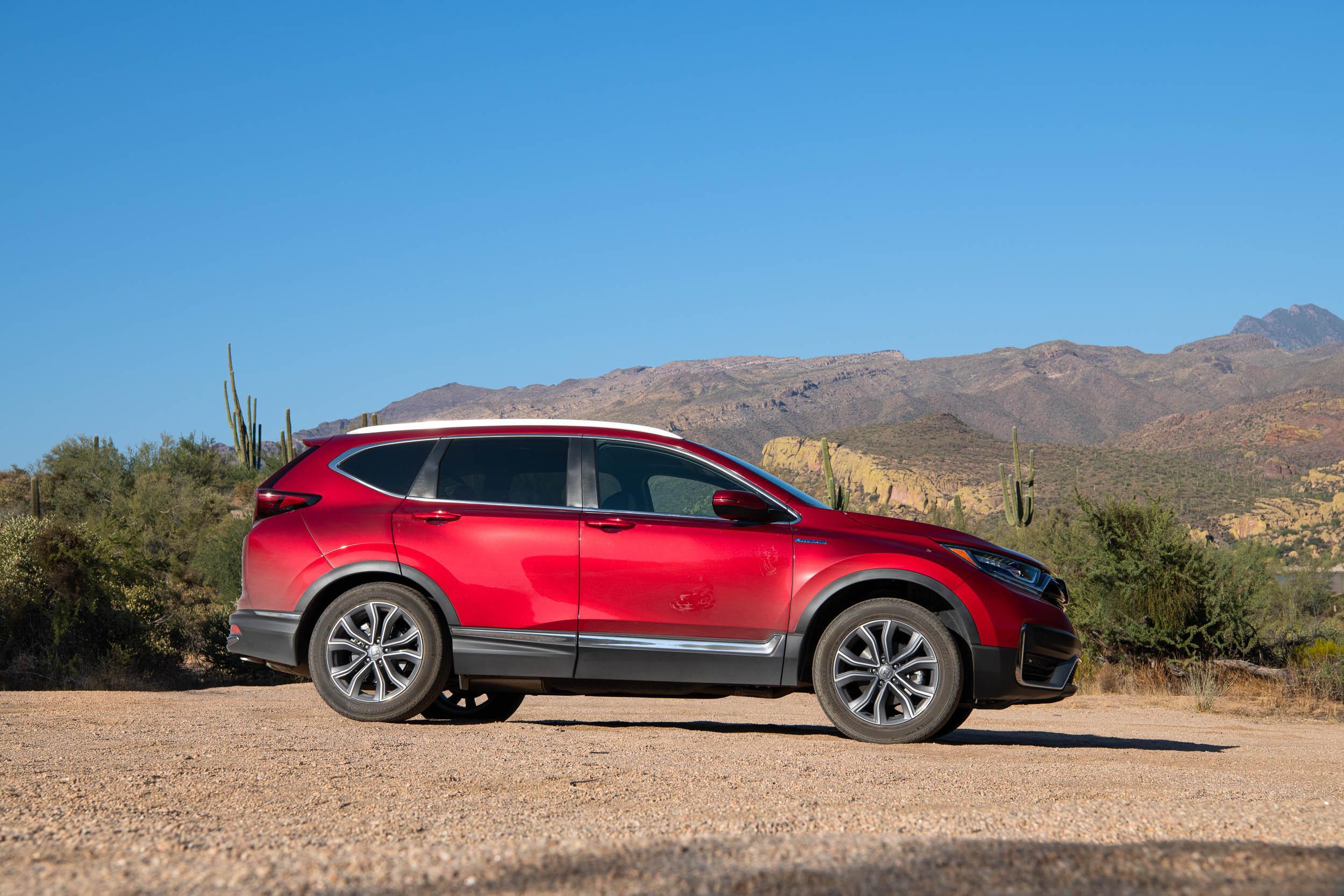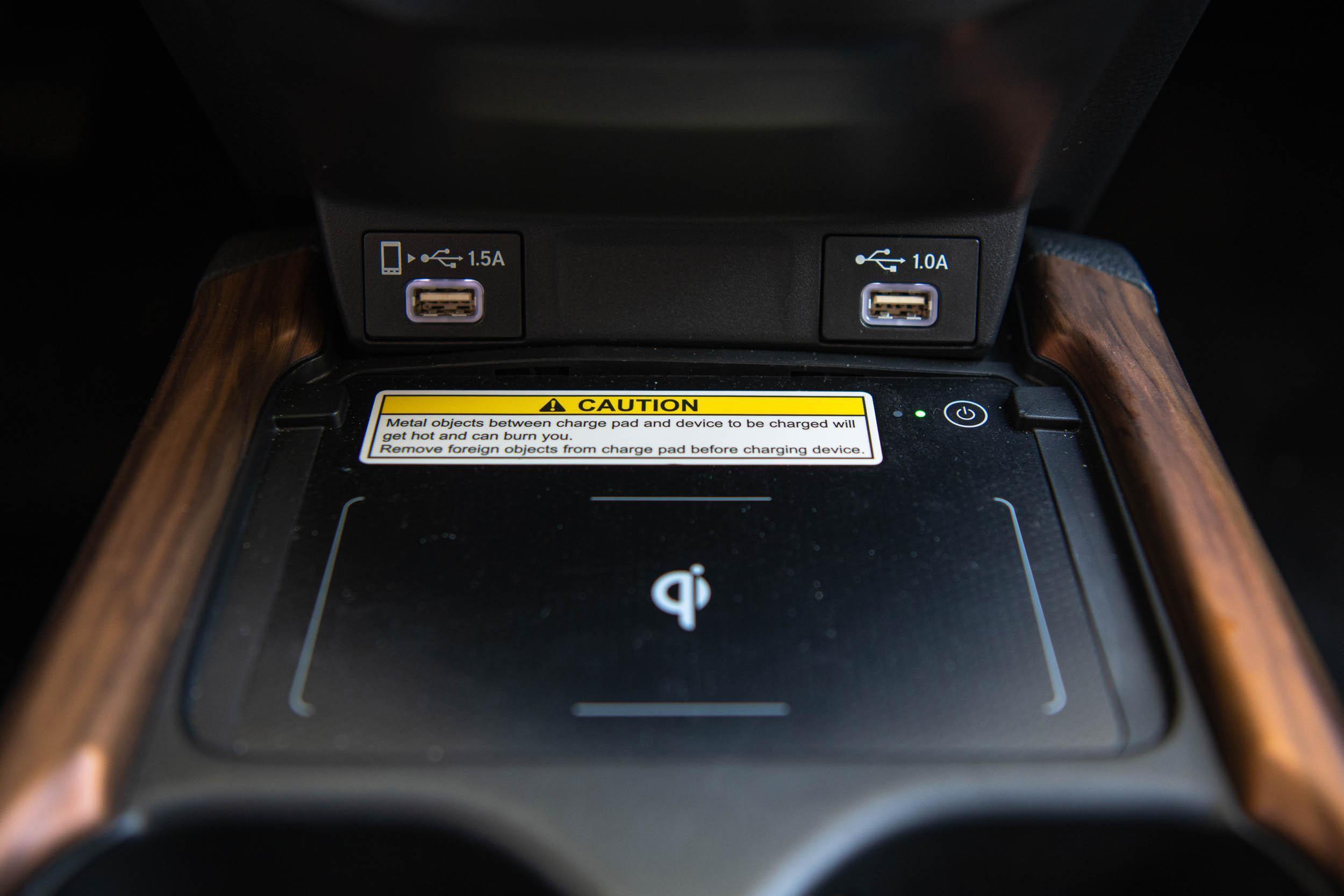
Words & Photos by Jennifer Jensen
Camry versus Accord.
Sienna versus Odyssey.
Highlander versus Pilot.
RAV4 versus CR-V.
Toyota versus Honda.
It is an age-old battle and it seems the competition is just going to continue to get hotter.
In this particular matchup, we have Toyota’s RAV4 and Honda’s CR-V but to add a little twist, both models are the hybrid variants.
Se we have two of the best-selling SUVs on the market and both have forward thinking powertrains. Let’s see how they stack up.
HONDA CR-V
Honda’s CR-V has been around for quite some time now. I actually owned a first generation CR-V way back in 1998. That original CR-V was quite the vehicle.
It had on-demand (Real Time) all-wheel drive, a relatively economical four-cylinder and a side-swinging back door.
I was an admitted Honda fan-girl back in those days and we wound up trading in two Civics on the all-new CR-V. I couldn’t wait for the first snowfall to go bounding through snowdrifts on back roads so I could try out the all-wheel drive system.
I still remember how much slip I could feel at the front end before the back wheels would try to help propel me forward. But the little-SUV-that-could never let me down or left me stranded.
The size was just about perfect as well. We had two dogs at the time, a Lhasa Apso (little dog) and a St. Bernard (big-ass dog). Our Saint was named Haanz and we called the CR-V the Haanz-Hauler.
We could easily lay down the second row of seats and help Haanz up into the back. He loved it.
ALL GROWN UP
The CR-V has grown up quite a bit since then. It is bigger in every dimension providing more space than ever. It also has a lot more oomph than the original 126 horsepower and 133 lb-ft of torque these days. Even if the engine is still a 2.0-liter four-banger.
When presented in hybrid form, the CR-V features a 2.0-liter Atkinson Cycle four-cylinder combined with a two-motor hybrid-electric system. The motors are set up a little different than you might expect. One motor is a generator/starter motor and the second one is used for propulsion. Total system output is 212 horsepower and 232 lb-ft of torque.
Honda claims a FIFTY-PERCENT increase in fuel efficiency when running around town. If all you do is run errands and carpool your kids, that is a huge increase in mileage.
The CR-V Hybrid is the first electrified SUV for Honda. Other hybrid vehicles from the brand include the Accord and Insight. It is also the first time Honda has applied the two-motor system to all-wheel drive.
It works by using an electronic clutch to send power from the electric motor to the rear wheels when traction is low.
The battery pack and controls are under the cargo floor so you do lose the spare tire in the CR-V Hybrid.
HOW DOES TOYOTA DO IT?
Toyota’s RAV4 beat the CR-V to the US market by a couple of years. The RAV4 broke the mold for SUVs by providing a car-like driving experience with an elevated ride height and available all-wheel drive.
The original RAV4 was available as a three-door or five-door model. That first generation also spawned an all-electric iteration that was only offered for sale for a very short period of time in California in 2002.
The RAV4 has grown in every dimension just like the CR-V, though the RAV4 feels absolutely massive inside.
Like the CR-V, the RAV4 uses the Atkinson Cycle on its four-cylinder, however the RAV4 engine is a 2.5-liter unit.
Toyota claims that the Rav4 Prime is the most-powerful, sportiest and fastest RAV4 they’ve ever made. With total system output at 302 horsepower it has 83 horsepower more than the outgoing RAV4 hybrid.
But, get this, the RAV4 Prime can do the 0-60 spring in 5.8 seconds. The CR-V needs an additional 1.2 seconds (or more) to do the same.
The RAV4 Prime also has an on-demand all-wheel drive system. Toyota calls it, “Intelligent All-Wheel Drive” and, like the Honda, it is a front-wheel drive system that sends power to the rears as needed using an electric motor.
The RAV4 is also a Plug-In Hybrid Electric Vehicle or PHEV and can go up to 39 miles on electric charge alone. That is great if you are just running some quick errands around town. The only downside to this is the location of the charging outlet.
Most plug-in vehicles put the charging outlet on one of the front quarter panels. Not so on the RAV4 Prime. The engineers at Toyota placed the charge port in the exact same spot as the fuel door, just on the opposite side. I guarantee that at some point, some driver of a RAV4 Prime will try to put fuel in the charging port.
The Honda does not plug in at all. Because of that it can only go a mile or two on battery alone.
Advantage RAV4.
THE LOOKS
Let’s take a walk around both SUVs, both in their fifth generation.
The Honda CR-V Hybrid is a relatively attractive vehicle all around.
The front bumper looks like it has an under bite. The lower area projects further than the upper and it gives a little mad dog look to the front end.
The side profile is a continuing evolution of the CR-V. The back end still has the tall taillights that are one of the CR-V’s most recognizable features.
The RAV4 is more aggressive in its appearance. It’s all hard cut lines and wedges.
The front end is comprised of two massive intakes flanked by two smaller vents topped with squinty headlights. It looks both truck-ish and fast at the same time.
On the side, the RAV4 has a dark colored lower portion that is stepped as you move along the line. There is a body colored portion at the D pillar that gives the appearance of a wing. The roof is also dark. These are all tricks to make the RAV4 appear shorter and as if it is in motion.
The back end is typical SUV but the lower portion continues the dark theme from the sides and comes up at least as high as the tire sidewall squeezing the back to a tightened center.
Advantage CR-V unless you love origami, then you’ll probably like the RAV4 better.
INTERIOR BATTLE
Hopping in the RAV4 the big theme continues. All the knobs and buttons are overly large as is the 9-inch center screen. Don’t get me wrong, all of the big buttons and knobs make the RAV4 supremely easy to interact with but it all looks a little Playskool.
I don’t fit in the seats very well either. There are side bolsters but they do a sorry job of keeping me in place during spirited driving.
The touchscreen is in a perfect place for line-of-sight and big enough to provide whatever you’re looking for in an easy-to-read manner. It does take a fair amount of pressure to “push” buttons on the touchscreen but fortunately there are direct action buttons running along both sides of the screen. Want to go to the home screen? Boop…one push of a button. Nice.
The knobs for the HVAC system can be utilized if you are wearing gloves…over your gloves. They are rubberized with grooves to make them super easy to use, but if you’ve got kids these knobs will collect every crumb and sticky thing that makes its way into the cabin.
The seats are covered in a material called SofTex. It is a thermoplastic polyurethane material that breathes better than leather and is supposed to stay much cooler in direct sunlight. We spent almost a week with the RAV4 Prime in sunny Arizona along with additional time in frigid Wisconsin. These seats do as they promise. They were much cooler in the sun and warmed up quickly in the cold.
Another nicety in the RAV4 Prime are the back windows. Unlike most other vehicles on the road today, the rear windows go all the way down into the door. Kids who love the wind in their hair will love it!
All-in-all the RAV4 is a pleasant place to spend time, at least sitting still.
The CR-V looks more grown up inside, especially in Touring trim.
Leather seats with wood trim pieces and aluminium accents provide a more finished appearance than the RAV4. The push button shifter also looks more at home than the more standard PRNDL shifter on the Toyota.
The Honda’s touchscreen is two inches smaller than the Toyota’s at 7-inches. That screen is tilted back a few degrees to provide ease of viewing and it looks slick. It operates just as well as it looks.
The CR-V is pretty easy to use as well, even though the buttons and knobs are not oversized. Both of these vehicles are the kind you can just get in and intuitively drive.
There is also a sweet center console in the CR-V that converts about fifty different ways to make the most of the storage between the two front seats.
Both vehicles also offer plenty of room for four, or even five, adults. The cabins are spacious and roomy.
Advantage CR-V for being more cosseting.
SAFETY
Both the CR-V Hybrid and RAV4 Prime are packed to the gills with safety features.
The RAV4 has Toyota’s Safety Sense 2.0 and the CR-V has Honda’s Sensing Suite. Both of these systems pile on safety tech such as collision-mitigation, forward collision warning with pedestrian detection, blind spot warning, lane keep assist, rear cross-traffic alert and on and on.
We’ll call this one a draw.
THE DRIVE
Toyota says that the RAV4 Prime is the sportiest RAV4 they have ever made. They put in a sport-tuned suspension that I just don’t like. It’s too rough.
The Toyota’s steering weights up nicely as you progress through turns, but the ride is just jarring enough to be uncomfortable. But this RAV4 is quick. Quite rapid, in fact.
I have zero doubts about the claimed 5.8-seconds to 60 mph. All that immediate torque pushes the RAV4 forward with authority and enough thrust to make me smile time and again.
For the first time there is a head-up display in the RAV4. It looks good and works well, providing all sorts of good information at a glance.
On the downside, the RAV4 Prime is surprisingly loud inside. There is a decent JBL audio system to drown out the road noise, but pile all that cabin intrusion onto the rough ride and I am left disappointed in the RAV4 Prime’s overall performance.
The CR-V is nowhere near as powerful as the RAV4 and you can tell immediately. Drive these two back-to-back and the CR-V will feel like a complete wimp. But it will also feel like a well-dressed and super calm wimp.
The CR-V rides very well and feels far more insulated and composed.
Both vehicles have adjustable regenerative braking systems and their hybrid systems do exactly what they are meant to…increase fuel efficiency dramatically. Both of these SUVs are capable of getting FORTY miles-per-gallon. That spec alone is worth the price of admission for either one of these talented SUVs.
The RAV4 Prime starts at $38,250 and the CR-V Hybrid starts at $30,560. The as-tested prices for the two vehicles you see here are $49,577 for the RAV4 Prime and $35,950 for the CR-V Hybrid. That’s a pretty significant difference.
The Toyota is certainly the fastest RAV4 ever…especially in a straight line. If you want to carve corners, spend your money elsewhere. But if you only drive a few miles each day and enjoy stoplight drag races while trying to get your kids with their overstuff backpacks and art projects to school on time, the RAV4 Prime might be just the ride for you.
In the end, if I were the one writing the check, the CR-V would get my vote. It feels more solidly built, is noticeably quieter inside and provides a superior ride. Add in the price difference for a comparably equipped model and the CR-V comes out on top.
RAV4 PRIME GALLERY

